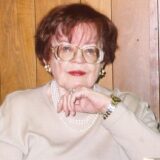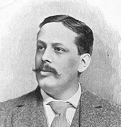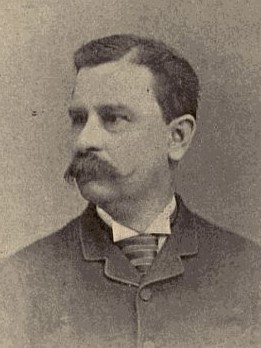Elizabeth Pope

Rebecca Elizabeth (Callis) Pope
November 21, 1925 – October 11, 2007
Saint Louis, Missouri
Rebecca Elizabeth Callis was born on November 21st, 1925 in Germantown, Tennessee to Jack and Bettie (Owen) Callis.
Elizabeth “Liz” Pope was a remarkable figure in American philately. Liz evolved from a serious stamp collector in her teens to one of the truly great figures in American commercial philately. In her youth, she married John D. Pope III, a St. Louis lawyer and lifelong serious specialist in U.S. classic stamps and covers. For decades before his death, she and John traveled extensively to attend scores of major stamp shows and to give expert presentations at large and small stamp clubs. This vigorous activity helped Liz become an astute philatelic expert in her own right. And when John passed away in 1983, Liz hardly paused in her national-level activities. Not only did she oversee the auction of his vast U.S. collections at Siegel’s in 1984, she became determined to learn the stamp auction business. Her contributions spanned several areas, and her impact on the hobby was profound.
The late Hans Stoltz, Liz’s dear lifelong friend, was employed as an executive of Robert A. Siegel Auctions Galleries when, in the 1980s, she learned from Hans that he had a dream to one day own and operate his own business. Liz was always looking to help people in the world of professional philately. She “engineered” Hans’ move to her hometown of Webster Groves where he opened a stamp shop, with Liz as co-owner, in a commercial office building Liz owned just down the street from where she lived. It quickly became a formidable “hangout” for locals as well as visiting philatelists from around the country.
Her knowledge of world philately, and in particular 19th century U.S. and Confederate States issues, was legendary—but more than that, her circle of friends includes the owners of most of the important stamp collections assembled in this country over the past 60 years.
Highlights about her fascinating life:
- Philatelic Expertise and Publications:
- In the 1980s, Elizabeth Pope assembled, wrote, and published the six-volume series titled “OPINIONS: Philatelic Expertising: An Inside View” for The Philatelic Foundation.
- Her expertise in expertizing and authentication was highly regarded within the philatelic community.
- St. Louis Stamp Expo and Webster Groves Stamp Club:
- In 1992, she worked closely with David Kols to found the annual St. Louis Stamp Expo, a World Series of Philately national exhibition.
- For over 50 years, she actively served as an officer, board member, and program director for the Webster Groves Stamp Club, one of the American Philatelic Society’s largest and oldest chapters.
- Christie’s Auctions and Tutelage:
- Elizabeth Pope commuted weekly between her home in Webster Groves and her apartment in New York City, where she oversaw Christie’s auction firm’s philatelic division.
- During her time at Christie’s, she handled significant philatelic holdings, including the renowned Honolulu Advertiser collection of Hawaiian classic stamps and postal history.
- She also mentored Charles Shreve and Scott Trepel. Trepel later became President of Siegel Auction Galleries.
- Legacy and Recognition:
- Elizabeth Pope’s achievements led to her induction into the American Philatelic Society Hall of Fame in 2021.
- Elizabeth Pope was inducted into the American Stamp Dealers Association (ASDS) Hall of Fame
- In recognition of her lifetime contributions to philately, the Elizabeth Pope Award (named after her) was presented to her at the St. Louis Stamp Expo in 2001
- Her personal collection of philatelic history and memorabilia found a new home with fellow Missourian and longtime friend Randy Neil who passed in 2024.
- Her impact on the hobby continues to inspire collectors and dealers alike.
Source: APS







